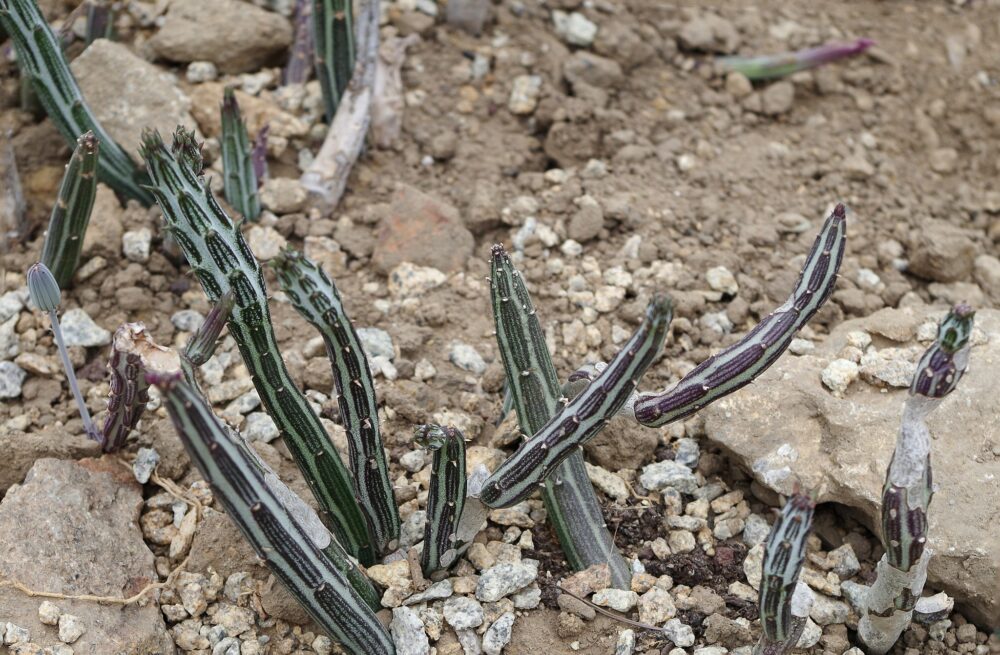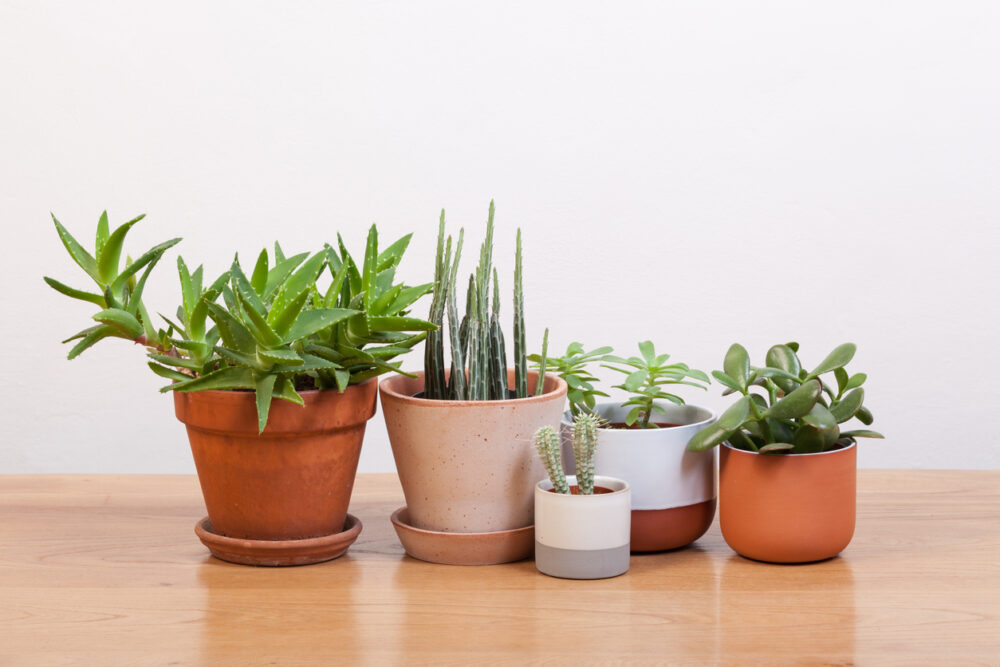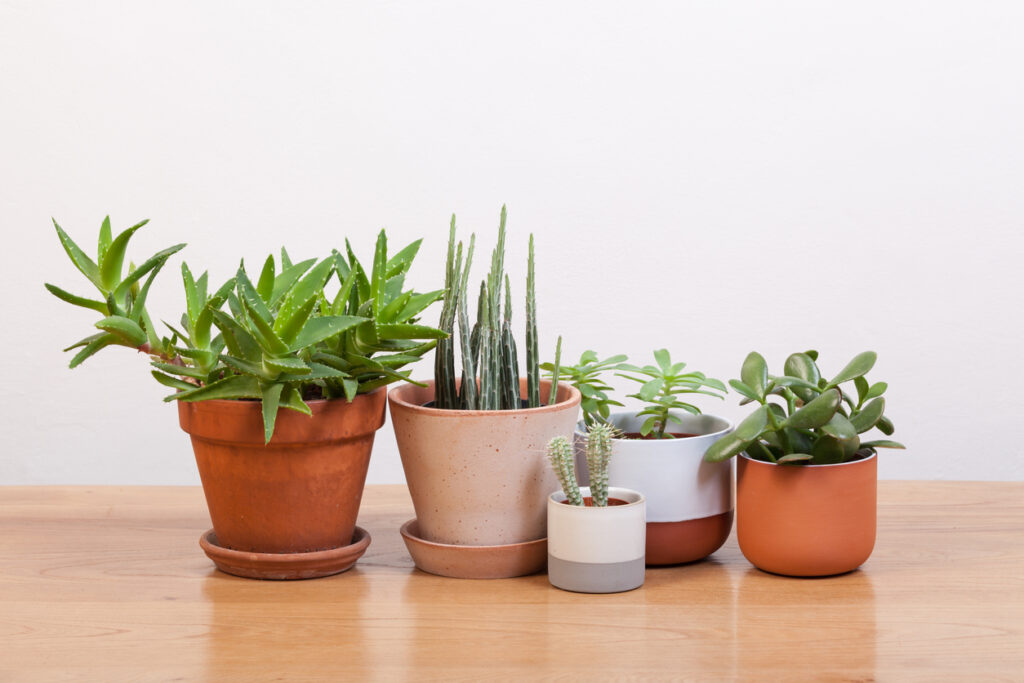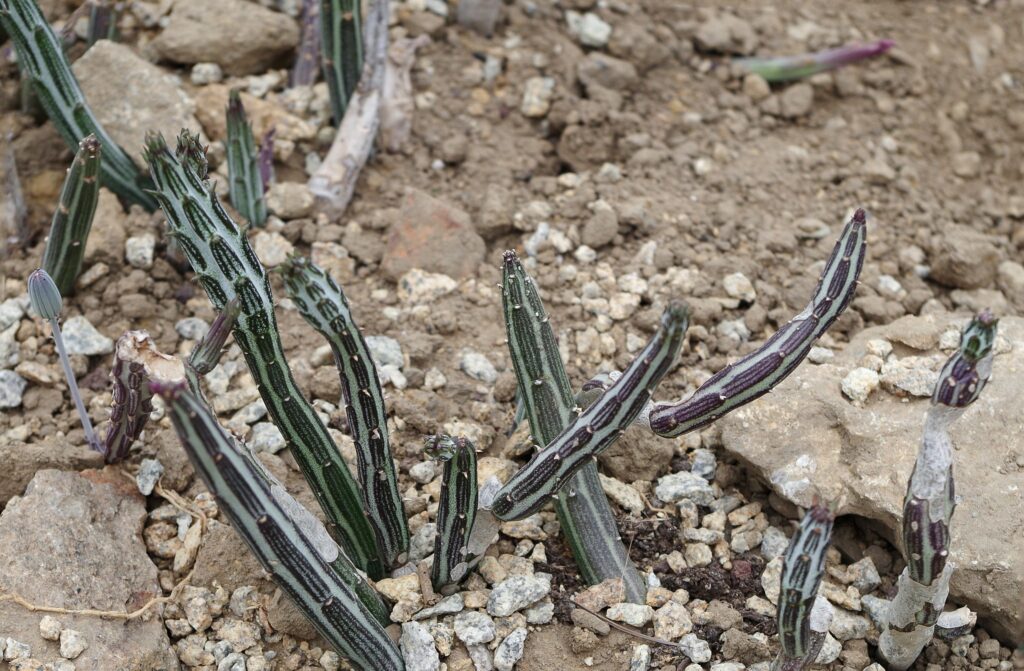Senecio Stapeliiformis Care: How to Grow & Care for the Pickle Cactus
As far as holding out against intolerable growing conditions goes, there’s no arguing that succulents steal the show. If you’re longing to own a succulent that blooms during most part of summer and fall when grown under USDA hardiness zones 5 to 9, then the Pickle cactus plant should be topping your list.
Unlike most other succulents you’ll find in nurseries and gardening stores, this exquisite perennial from the Delosperma genus happens to have soft spines, and that makes it hold an overly-differentiating attribute. Stay tuned to find more about the ins and outs of caring for the Pickle cactus plant.
The Pickle Plant at a Glance
If I was to be candid, I would describe the Pickle Plant as an engrossing succulent that’s conspicuous for having two scientific names. You’ll find some nurseries labeling it as Senecio Stapeliiformis, while others prefer to stick with Kleinia Stapeliiformis. Other common names it often goes by include:
- Spider Plant
- Candle Stick
- Trailing Jade
- Pickle Plant Succulent
- Candle Plant
You’ll mostly hear it being referred to as the Pickle plant succulent. This unfussy cactus is native to South Africa and belongs to the Asteraceae family. And that’s more reason why it’s also called Senecio stapeliiformis. Kleinia, on the other hand, is the genus that belongs to the senecioneae tribe, which is, so far, the largest in the Asteraceae family. This cactus type closely resembles the candle plant especially in the shape and structure of its stems.
You’d also almost certainly confuse the texture on the stems of this succulent, together with the rate and appearance it takes up while growing with that of cylindrical snake plants . And one probable excuse for that would be because the Pickle plant develops from rhizomes that sprout from the soil. The stems tend to have pickle spots on them and hold tiny leaves with more or less the same attributes as those of other succulent plants.
Senecio Stapeliiformis Caring Tips
Light & Temperature
Succulents, including the magnificent Pickle plant, prefer to be grown under the full sun, but with some partial shade, especially when the temperatures are at their peak. Whichever position you want, place the growing medium; it’s best to make sure it gets at least 3 or 4 hours of direct access to the sun each day.
To put it into more discernible context, what you want to do when it comes to the temperature conditions is give your Pickle cactus the warmth it’s habituated to all year round. But one fascinating fact about this succulent is it can withstand frosting conditions ranging between 10 – 15°C. For it to grow impeccably, the Pickle cactus prefers to grow under USDA hardiness zones 9 to 11.
While succulents often glow better and get a more prepossessing color tone when exposed to the right amount of sun, you want to be careful not to overdo it. The leaves of your Pickle cactus could burn and have white or faint patches when left out in the sun for too long. Depending on the magnitude of the damage, the leaves will ultimately dry, turn dark, and dry off.
One early sign you’ll need to watch out for is an unusually yellow tone forming on the edges of the leaves. You can treat this condition by moving your Pickle succulent to an environment that’s a bit cooler.
Watering & Feeding
For the most part, when the Pickle cactus hits maturity, it tends to show a staggering tolerance to drought. Even though it’s a succulent that’s capable of storing water in its fleshy leaves, you don’t want to neglect it for too long, especially when summer checks in. What you’ll mostly need to focus on is keeping the soil evenly moist for a number of hours.
I’d recommend using the soak and dry method. It tends to work out just fine for all my succulents. And while the Candle plant seems to withstand cold conditions, we recommend spacing out the watering intervals during winter when the conditions hinder the soil from draining at the same rate when the temperatures are warmer.
Plants growing in sandy soil are highly likely to replenish the nutrients after a few growing seasons. Apart from replacing the old soil with one that’s revitalized with all the essential micronutrients, you might consider adding fertilizer to stimulate the growth hormones. Although not necessary, feeding your Pickle cactus with the right amount of fertilizer would help enhance its health and physique.
On the other hand, too much fertilizer results in leggy growth, which causes some parts such as the stems and roots of your Pickle succulent to elongate disproportionately. Instead of using synthetic fertilizer, you can try out manure tea to enrich the potting soil with the needed nutrients.
I like manure tea the most because it’s too mild to burn the leaves of your Pickle cactus. I also find the Miracle-Gro Cactus Fertilizer quite useful since it noticeably helps the foliage of my succulents have so much greenery throughout the year. Avoid overwatering at all costs since it causes the roots to rot and bloats the leaves. If the cell walls collapse, there are high chances you’ll ultimately kill your plant.
Soil & Transplanting
You won’t need to do any tweaking to the soil pH since the Pickle cactus isn’t too sensitive to the acidity or basicity of the soil. It can pull through quite well when the pH of the soil is at the neutral range. You, however, want to mix the potting soil with a portion of sand to help with the drainage process. We can’t emphasize further the effects of drenched soil.
If the texture of the soil retains moisture for too long, your Pickle plant will begin to rot. Apart from the normal cacti mixes used for succulents, another DIY succulent potting soil that works wonders for your Pickle plant is mixing 2.5 cups of normal potting soil with 1 cup of pumice and 1 cup of sand to enhance the rate of being permeable. So, the ratio for this mix would be 2.5:1:1. You can also choose to plant it inside a growing pot purely composed of pumice.
Grooming & Maintenance
The pencil-like stems tend to bend downwards as they grow taller. That would ultimately make your Pickle cactus lose its vigor, especially if it’s growing indoors inside a pot. Make sure it gets enough sunlight to make it not grow towards the direction of light. Once you spot a few leggy stems in your houseplant, you need to prune them during the early weeks of spring, when the growth hormones are a lot more responsive and beginning to recoup the strength needed to stimulate the essential enzymes.
The tone on the leaves of your Pickle plant would look stunning when growing outdoors during summer. And although this cactus is somewhat tolerant to frosting conditions, it’s best to move it indoors during the fall season, so you can tweak the room temperature and humidity levels. Get rid of the dead flowers when the blooming season is over to maintain their radiant appearance.
Common Pests & Diseases
This hardy succulent isn’t prone to any serious pests or diseases. What you need to avoid the most is overwatering your Pickle cactus. Rotting of the stems and roots will sooner or later cause the entire plant to die off. Your Pickle cactus will be invaded by pests such as spider mites, aphids, mealybugs, and fungus gnats on rare occasions.
Mealybugs excrete a whitish and waxy substance on the leaves after sucking the juicy sap. To suppress the infestations by mealybugs without causing any significant damage, use a cotton swab dipped in alcohol to wipe off the affected areas. Although spider mites are hard to spot visibly, one of the early signs you can use to rule out a possible infestation is when there are white webs on the stems and leaves.
Use natural repellant remedies such as neem oil to weed out the spider mites. While fungus gnats don’t pose a huge threat to your Pickle cactus compared to other bugs, they breed at rapid speed especially when the soil remains moist for too long.
How to Propagate Your Pickle Plant
If you’re looking to multiply the number of Pickle plants in your garden or indoor space, one of the fastest ways to go about the exercise is propagating it using stem cuttings. Seedlings can also help propagate the Pickle cactus, but it would take much longer to see tangible results compared to using stem cuttings. To get over with this exercise, you need to:
- Make a few stem cuttings from unblemished parts of the mother plant. Spring and fall are usually the best seasons to make the cuttings.
- Leave the cuttings outside so the wounds can heal off completely.
- Prepare the potting soil using hints we highlighted right under the soil and transplanting section.
- Place the growing medium somewhere with zero frosting conditions. It needs to grow in a bright and warm environment.
- Moist the topsoil gently and don’t overdo it to avoid breeding bacteria which causes the roots and leaves to rot. The root hairs will develop within few weeks.



